Search Images
Browse Content (p. 1569)
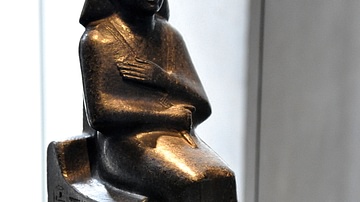
Image
Statue of Iahmes
Grabbo seated figure of Iahmes, chief of the granaries of the god Amun. From El-Kab, modern-day Egypt. New Kingdom, 18th Dynasty, 1480 BCE. (State Museum of Egyptian Art, Munich, Germany).
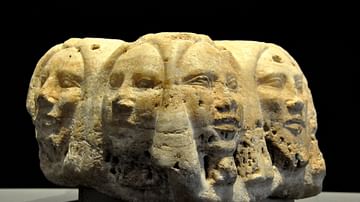
Image
Proto-Historical Statue from Egypt
Base of a calcite royal statue. It depicts four heads of foreigners. From modern-day Egypt. Proto-historical period, 2nd Dynasty, circa 2700 BCE. (State Museum of Egyptian Art, Munich, Germany).
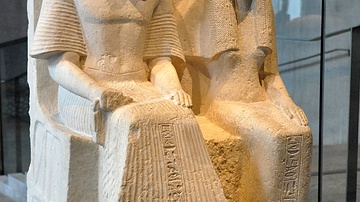
Image
Statue of Sibe and His Wife
Limestone seated figures of Sibe and his wife. From modern-day Egypt. New Kingdom, 19th Dynasty, circa 1220 BCE. (State Museum of Egyptian Art, Munich, Germany).
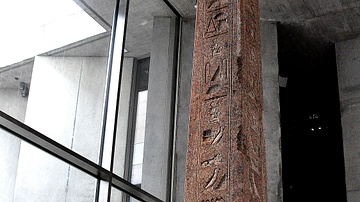
Image
Obelisk of Titus Sextius Africanus
This rose granite obelisk was found in Rome. Roman period, circa 50 CE. (State Museum of Egyptian Art, Munich, Germany).
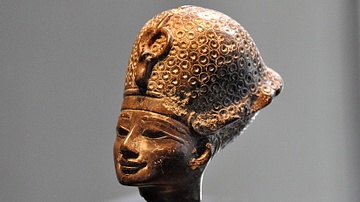
Image
Head of Thutmose IV
Steatite (soapstone) head of the Egyptian pharaoh Thutmose IV. He wears a blue crown. From modern-day Egypt. New Kingdom, 18th Dynasty, 1380 BCE. (State Museum of Egyptian Art, Munich, Germany).

Image
Coffins of Herit-ubekhet
Two sycamore wood coffins of Herit-ubekhet, a temple musician at Karnak. From Deir El-Bahari, Western Thebes, modern-day Egypt. 3rd intermediate period, 21st Dynasty, circa 1000 BCE. (State Museum of Egyptian Art, Munich, Germany).

Image
Statue of Amenemhat III
In this ophicalcite statue, only the upper half of a seated figure of the Egyptian pharaoh Amenemhat III has survived. Probably from Faiyum, modern-day Egypt. Middle Kingdom, 12 Dynasty, circa 1800 BCE. (State Museum of Egyptian Art, Munich...
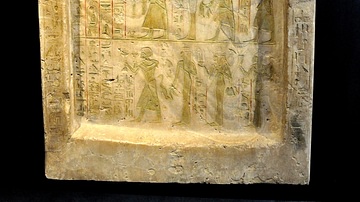
Image
Stela of Sobeknakht, Amarna
Calcite/alabaster stela of the hereditary prince Sobeknakht. From the quarries of Amarna, modern-day Egypt. New Kingdom, 18th Dynasty, 1380 BCE. (State Museum of Egyptian Art, Munich, Germany).
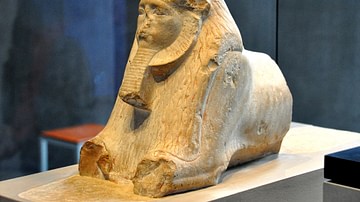
Image
Sphinx of Amenemhat III
Limestone statue of maned sphinx of the Egyptian pharaoh Amenemhat III. From modern-day Egypt. Middle Kingdom, 12 Dynasty, circa 1800 BCE. (State Museum of Egyptian Art, Munich, Germany).
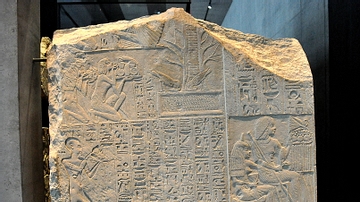
Image
Imeneminet 's Tomb Relief from Saqqara
In this limestone tomb relief, the deceased man (with his seated wife) sits before an offering table. From the grave of Imeneminet, Saqqara (Sakkara), modern-day Egypt. New Kingdom, 18th Dynasty, 1320 BCE. (State Museum of Egyptian Art, Munich...